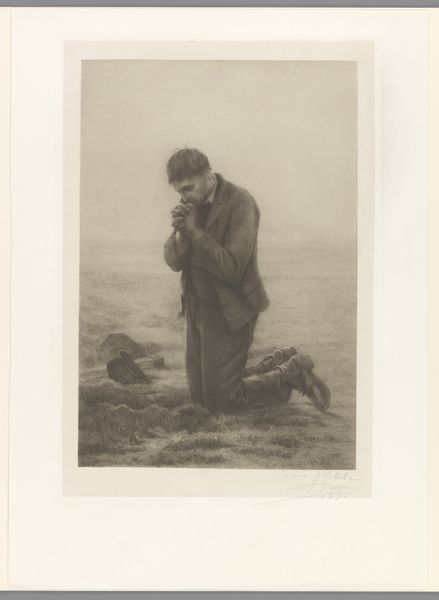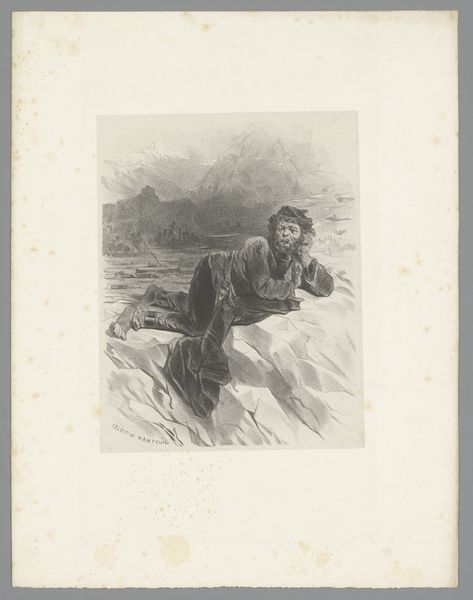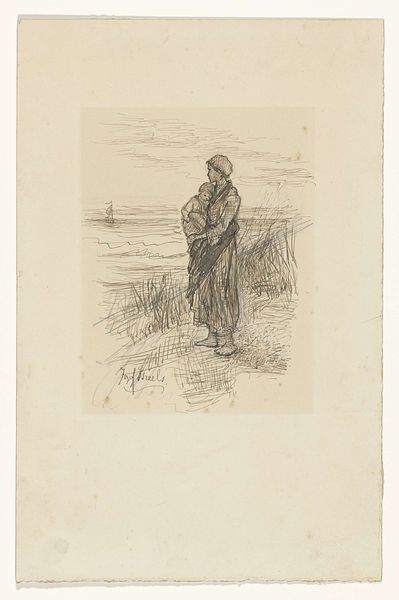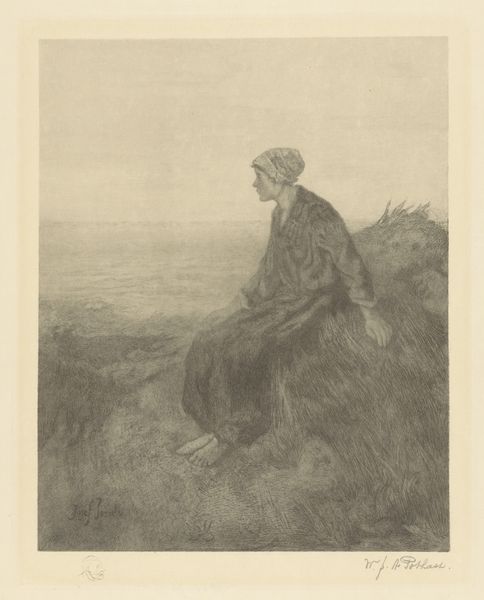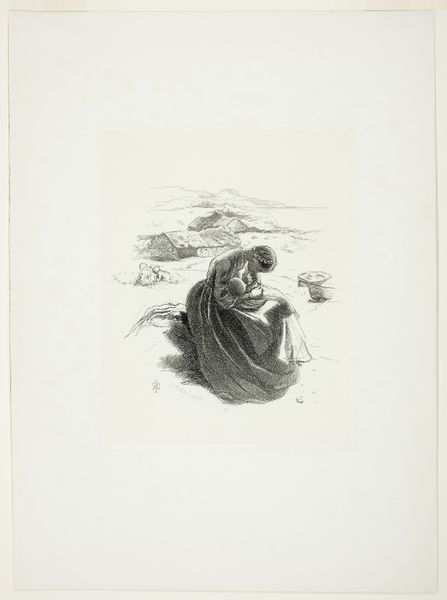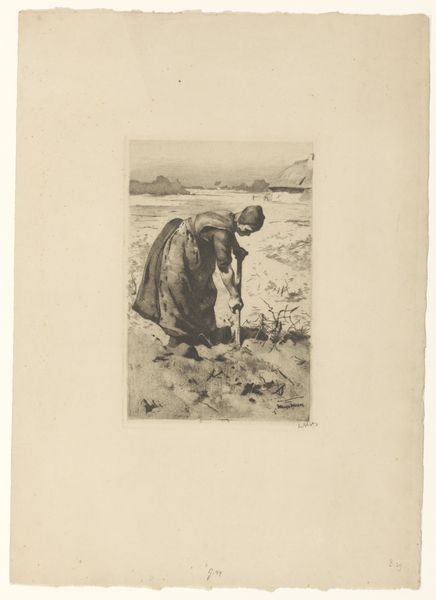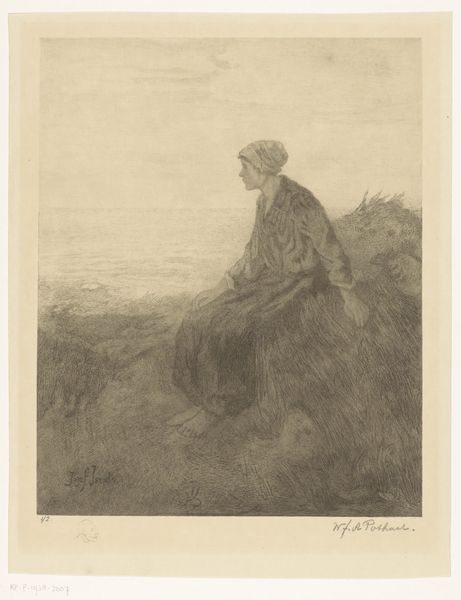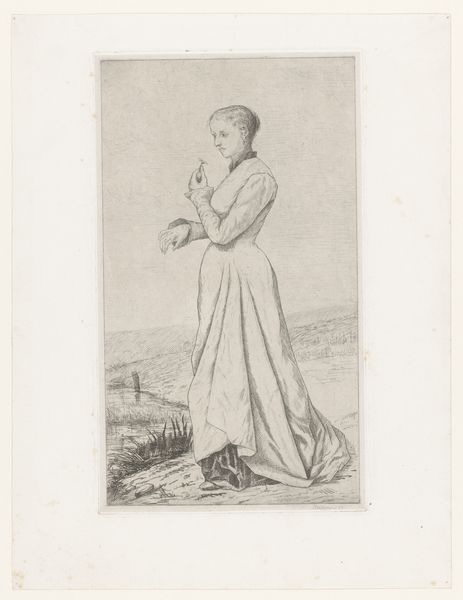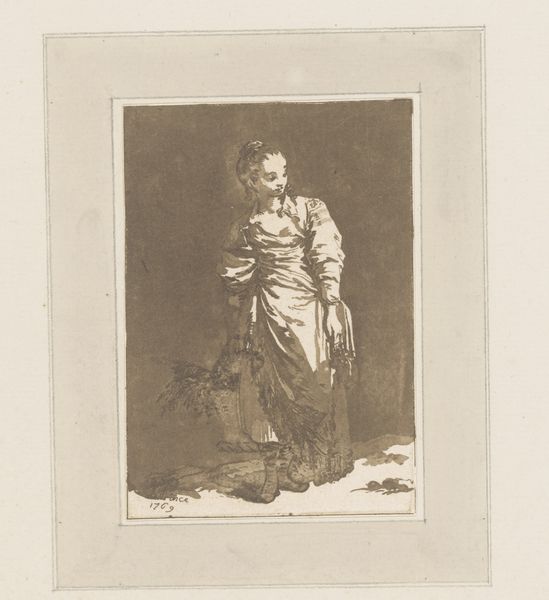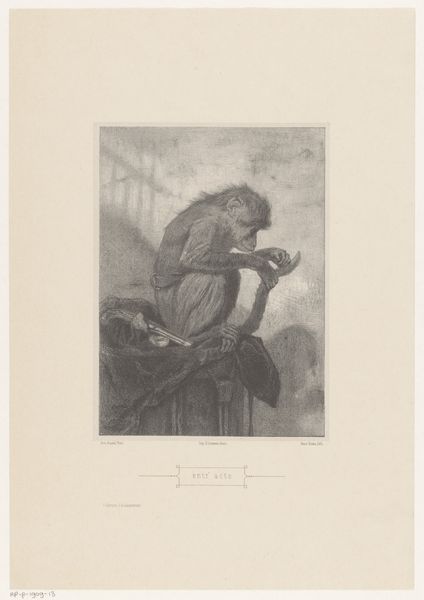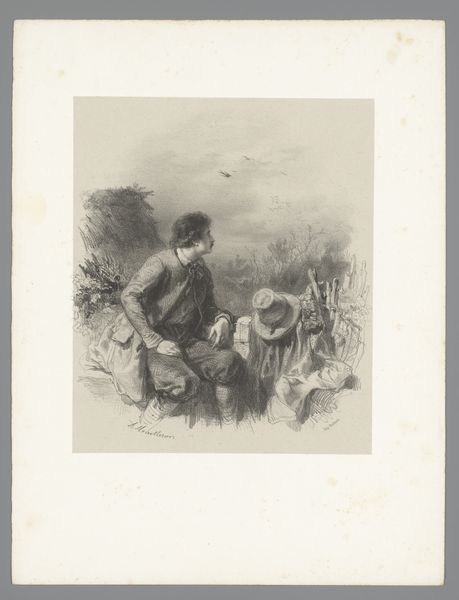
drawing, print, engraving
#
pencil drawn
#
drawing
# print
#
old engraving style
#
landscape
#
figuration
#
genre-painting
#
engraving
#
realism
Dimensions: height 455 mm, width 320 mm
Copyright: Rijks Museum: Open Domain
Curator: What strikes you about this print, titled "Landarbeider knielt in het veld voor zijn gebed", created in 1898 by Auguste Danse? Editor: Immediately, it's the vulnerability. He's kneeling, head bowed, utterly exposed in that vast field. There's a sense of desperation hanging in the air. Curator: Interesting. Consider the materials used: engraving on paper. The print medium was increasingly accessible at the time, which aligns with the rise of Realism. This image circulated, depicting the hard labor of rural life. Editor: So, its reach was wider. How did this impact public perception of the working class? Were these images intended to incite change, or simply to document reality? I imagine there were specific exhibition venues that pushed the piece towards broader visibility. Curator: Good question! I think there's also something important in the stark contrasts. The limited tonal range forces the viewer to focus on the textures – the rough clothing, the coarse earth. Danse draws our attention to the material conditions. His technique mirrors the subject's arduous life. Editor: And speaking of technique, look at how his tools—that spade next to him—are almost casually discarded. It suggests a moment stolen from the relentless demands of physical labor. Religion could function both as a form of comfort and of social control. Where would viewers have encountered an image like this? Curator: Possibly in illustrated journals or magazines. It could also be acquired as a relatively affordable piece of art for the home, offering a visual connection to the rural struggles absent from many urban lives. Editor: The politics of imagery... Even a seemingly straightforward image is steeped in socio-economic meaning. It's a commentary on labor, faith, and societal disparity all in one. Thank you for guiding me on this piece. It goes far beyond its surface. Curator: Indeed, it is a wonderful thing how examining materiality, technique, and context enrich our view of such works!
Comments
No comments
Be the first to comment and join the conversation on the ultimate creative platform.
